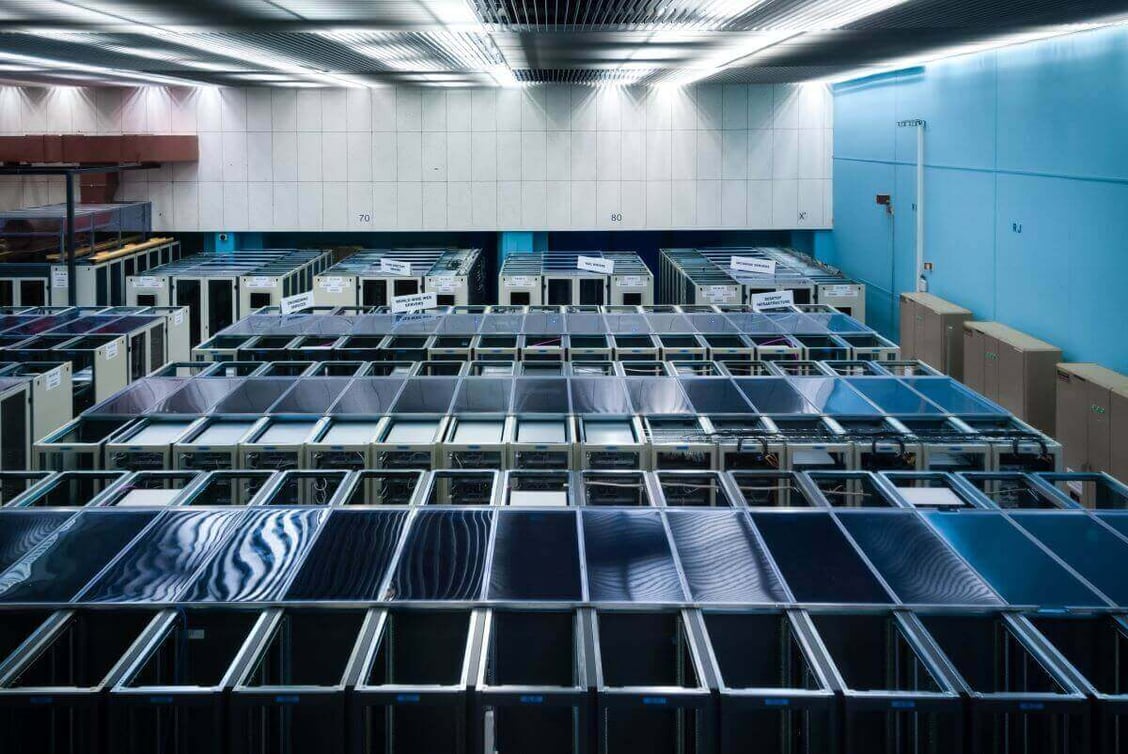
Capacity planning is essential to ensuring your data center meets long-term business needs. Let’s explore the topic of data center capacity planning so you can be certain that your data center offers the space and density needed to fulfill your goals.
How Data Center Capacity Planning Works
Capacity planning is an integral part of the design phase of any new data center construction project. It involves determining how much space and IT density is necessary to host all the applications or data storage you need.
This is an ongoing process for data centers as business needs evolve and capacity demands change. Many data centers find they need to add capacity as time goes on. This doesn’t always mean expanding private computing infrastructure, however. To ensure that applications run in the most optimal environment possible, many companies employ a hybrid computing approach that helps them reduce their need for private computing.
Determining your capacity needs now and in the future can be complicated. As TechTarget points out, the capacity planning process involves calculating your load not only at normal times, but also at times of peak demand so you can accommodate these instances. Calculating your optimal load involves either “simulated or real load testing, trend analysis or modeling using tools designed for this purpose.”
The Problem with Overplanning
Overplanning your capacity may seem strategic for future-proofing your data center, but this approach has some significant drawbacks, all of which come down to waste.
Wasted Costs
One of the main consequences of overprovisioning your capacity is the financial cost. The building space, electrical systems and cooling infrastructure required for extra capacity all contribute to a much higher project cost. You also incur higher operating expenses for ongoing activities like maintenance and rotation of equipment in and out of service to balance out utilization—plus the labor involved in staffing your oversized facility. This adds up to an expensive safety net for potential future usefulness. For now, you’re just overspending for something that isn’t providing any value.
Wasted Energy
Overprovisioning equipment and space can make your data center less energy efficient. Consider all the energy spent to operate a larger facility with more equipment than you need. Under-utilized space in the facility (and the supporting electrical and mechanical systems serving that space) will negatively impact your power usage effectiveness (PUE)—a critical metric for data centers. Even with measures like variable speed controls for equipment in place, underloaded equipment tends to run less efficiently.
The Problem with Underplanning
Although overplanning is an issue, there’s a reason why many data centers err on this side. According to Mission Critical Magazine, more than three-quarters of organizations “are seeing increased demands on their infrastructure and pressure to maximize space and resources.” The need for increased capacity is likely to come, and when it does, what can you do if your facility is already maxed out?
Just like overplanning, underplanning capacity can have negative consequences for data centers. As a capacity management vendor points out, a shortcoming in data center capacity can result in serious problems like:
- Lost revenue
- Stunted productivity
- Negative customer experiences resulting in brand damage
For these reasons, it may make sense to give yourself room to grow in your data center. Being hemmed in by a capacity limit can hurt you just as much as overprovisioning.
The Solution: Prioritize Flexibility and Scalability
Both overplanning and underplanning are problematic, and it can be nearly impossible to accurately predict your capacity needs in the distant future. So what can data centers do to avoid waste and ensure they’re ready to meet their current and future needs?
One of the most pragmatic solutions available is modular construction. Modular construction enables the flexibility to respond and scale as your needs evolve.
Modular Data Centers
All-in-one modular data centers (MDCs) have been embraced throughout the industry because they offer numerous advantages, including ultimate scalability. Modular units allow you to right-size your capacity for current demands and seamlessly add additional capacity as needed.
Because MDCs are self-contained, they can even be placed outside your facility. With minimal site preparation, you can install a standalone MDC in your parking lot or another area to build out the capacity you need when you need it.
MDCs also come together more rapidly than traditional stick-built data center construction projects. Standardized offerings that can be easily tailored to meet any user’s specific requirements mean that design doesn’t have to be started from scratch every time. Design time is shorter, production is completed in repeatable fashion from project to project and the result is typically a faster build and deployment cycle.
Learn more about the advantages of modular construction and exactly how much time and money you could save in our infographic, “Traditional vs. Modular Data Center Design.”
Modular Skids
Many hyperscalers have embraced modular scalability in the form of electrical and mechanical skids. Electrical and cooling infrastructure is a major consideration in scaling your capacity, and building these systems the traditional way can be complex and time consuming.
Skids integrate the infrastructure into a pre-manufactured system, and most of the construction takes place in a separate, controlled facility. The skids arrive ready to be powered at your facility, allowing for fast, simple deployment.
Scale Your Capacity by Going Modular
Strategic data center capacity planning is essential, but there are times when the most informed planning misses the mark. Flexibility to scale as the business dictates is best practice in the IT community. Rapidly respond to your evolving needs with modular construction.
PCX is an industry leader in modular construction. Learn more about MDCs by checking out our resource, The Complete Guide to Modular Data Center Solutions.


Comments